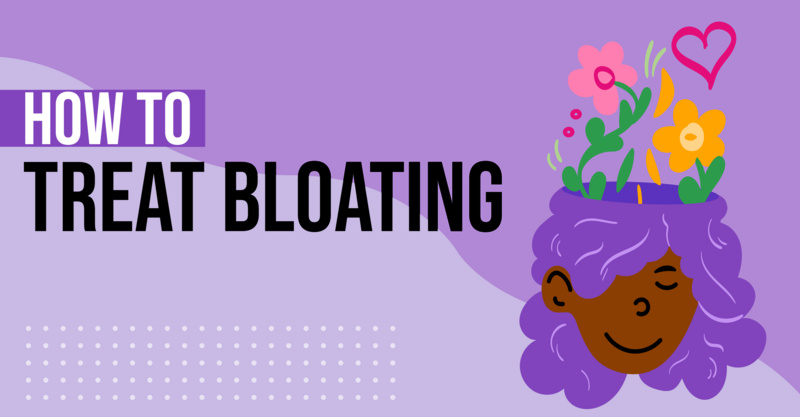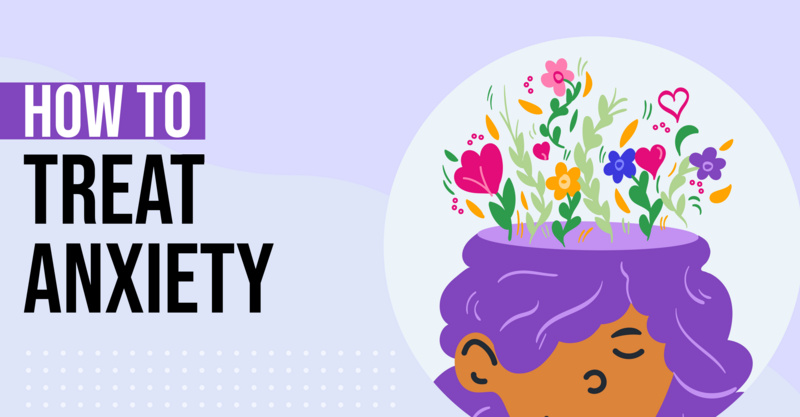Key Points
- Post-traumatic Stress Disorder (PTSD) is a mental health condition that occurs after experiencing a traumatic event, with symptoms such as flashbacks, severe anxiety, and uncontrollable thoughts about the event.
- The causes of PTSD are multifaceted, involving psychological, genetic, and environmental factors, and it can manifest in various forms like Acute Stress Disorder, Complex PTSD, and Disinhibited Social Engagement Disorder.
- PTSD can lead to secondary complications that further impact an individual's quality of life, including depression, anxiety, substance abuse disorders, eating disorders, and suicidal thoughts.
- Prevention of PTSD involves early intervention, fostering resilience, and providing immediate support.
- Accurate diagnosis of PTSD is vital, with treatment options including Cognitive Processing Therapy, Eye Movement Desensitization and Reprocessing Therapy, Prolonged Exposure Therapy, Trauma-Focused Cognitive Behavioral Therapy, and medication with psychiatric assistance.
Post-traumatic Stress Disorder (PTSD) is a prevalent mental health condition that can develop after an individual experiences or witnesses a traumatic event, according to the CDC. This article delves into the nature of PTSD, exploring its symptoms, causes, and the impact it has on individuals' lives — by shedding light on the various aspects of this condition this article aims to enhance understanding and awareness, while also discussing potential treatment options and coping strategies for those affected.
What Is PTSD?
Post-traumatic Stress Disorder (PTSD) is a mental health condition that arises after an individual has been exposed to a traumatic event, according to the CDC. They explain that understanding PTSD is crucial for recognizing its signs and seeking appropriate help.
PTSD can develop following a variety of traumatic experiences, such as natural disasters, serious accidents, terrorist attacks, war or combat, rape, or other violent personal assaults, according to the National Institute of Health (NIH). They note that individuals with PTSD may relive the traumatic event through flashbacks or nightmares, experience severe anxiety, and have uncontrollable thoughts about the event. These symptoms can be persistent and debilitating, significantly impairing an individual's ability to function in everyday life.
The exact causes of PTSD are not fully understood, according to the NIH, but it is believed to result from a complex interplay of psychological, genetic, and environmental factors. Risk factors may include a history of mental health issues, the intensity of the trauma, lack of support after the event, and additional stressors. Recognizing the symptoms and understanding the underlying mechanisms of PTSD can facilitate early intervention and treatment, which can greatly improve outcomes for those affected.
Types of PTSD
PTSD manifests in various forms, each with its own unique set of characteristics and challenges, according to the NIH. They explain that understanding these distinctions is essential for accurate diagnosis and effective treatment:
-
Acute Stress Disorder (ASD): This condition occurs within the first month following a traumatic event. Individuals with ASD may experience severe anxiety, dissociation, and intrusive memories. While the symptoms are similar to those of PTSD, they are shorter in duration. Early intervention can sometimes prevent the progression from ASD to PTSD.
-
Complex Post-Traumatic Stress Disorder (CPTSD): CPTSD arises from prolonged or repeated trauma, often occurring in situations where the individual feels trapped, such as ongoing domestic abuse or captivity. In addition to the symptoms of PTSD, CPTSD may include difficulties with emotional regulation, consciousness, self-perception, and relationships with others.
-
Disinhibited Social Engagement Disorder (DSED): Typically diagnosed in children, DSED is characterized by a pattern of behavior that involves overly familiar interactions with unfamiliar adults. This condition can develop after severe neglect or inconsistent caregiving, and it reflects a child's difficulty in forming appropriate social boundaries.
These conditions highlight the diverse ways in which trauma can affect mental health, underscoring the importance of tailored approaches to treatment and support.
PTSD Symptoms
PTSD encompasses a wide range of symptoms that can profoundly impact an individual's mental and emotional well-being, according to the NIH. Recognizing these symptoms is crucial for early diagnosis and effective intervention:
-
Intrusive Thoughts: Individuals with PTSD often experience recurrent, involuntary memories of the traumatic event. These can include vivid flashbacks, distressing dreams, or intense emotional reactions when reminded of the trauma. Such intrusive thoughts can be overwhelming and disrupt daily functioning.
-
Avoidance of Triggers: To cope with distressing memories, individuals may actively avoid places, people, activities, or situations that remind them of the traumatic event. This avoidance can lead to significant changes in behavior and lifestyle, often limiting the person's ability to engage in normal activities.
-
Negative Alterations in Mood and Thoughts: PTSD can lead to pervasive negative emotions such as fear, anger, guilt, or shame. Individuals may also experience distorted beliefs about themselves or others, such as feeling worthless or believing that the world is entirely dangerous. This category also includes a diminished interest in activities once enjoyed and feelings of detachment from others.
-
Negative Changes in Reactions: Also known as hyperarousal symptoms, these include being easily startled, feeling tense or "on edge," having difficulty sleeping and experiencing angry outbursts. These heightened reactions can make it challenging to relax or feel safe, further exacerbating the individual's distress.
Understanding these categories of symptoms can aid in identifying PTSD and seeking appropriate treatment, fostering a path toward recovery and improved mental health, according to the NIH.
What Causes PTSD?
The development of PTSD is influenced by a combination of factors that interact in complex ways, according to Medline Plus. They explain that by understanding these causes, we can better identify individuals at risk and develop strategies for prevention and treatment.
Some of the causes of PTSD, according to the Medline Plus, includes:
-
Stressful, Traumatic Experiences: The most direct cause of PTSD is exposure to a traumatic event. This can include experiences such as combat, natural disasters, serious accidents, violent personal assaults, or any situation where an individual feels extreme fear, helplessness, or horror.
-
Inherited Mental Health Conditions: Genetics can play a role in the development of PTSD. Individuals with a family history of mental health disorders, such as anxiety or depression, may be more susceptible to developing PTSD following a traumatic event.
-
Hormonal or Chemical Instability: Imbalances in brain chemistry and hormone levels can also contribute to PTSD. For example, abnormal levels of stress hormones like cortisol, or neurotransmitters such as serotonin and norepinephrine, can affect how the brain processes and responds to stress and trauma.
These causes highlight the multifaceted nature of PTSD, emphasizing the importance of a comprehensive approach to understanding and addressing this condition, according to Medline Plus.
Risk Factors for PTSD
While anyone can develop PTSD after experiencing a traumatic event, certain factors can increase the likelihood of its onset, according to the NIH. They note that there are various risk factors that may predispose individuals to PTSD, which can provide a clearer understanding of why some people are more vulnerable to this condition than others. Recognizing these risk factors can aid in early identification and intervention, potentially mitigating the impact of PTSD, according to the NIH.
Some of the risk factors for PTSD, according to the NIH, include:
-
Having Experienced Childhood Abuse: Early exposure to trauma, such as physical, emotional, or sexual abuse during childhood, can significantly increase the risk of developing PTSD later in life. Such experiences can have long-lasting effects on an individual's mental health and coping mechanisms.
-
Having a Job That Exposes You to Traumatic Events: Professions such as military service, emergency response (police, firefighters, paramedics), and healthcare can involve frequent exposure to traumatic situations. This repeated exposure can heighten the risk of developing PTSD.
-
Having Other Mental Health Disorders: Individuals with pre-existing mental health conditions, such as anxiety, depression, or bipolar disorder, are more susceptible to developing PTSD. These conditions can impact how a person processes and recovers from trauma.
-
Having Problems with Substance Abuse: Substance abuse can complicate the recovery process and increase the likelihood of developing PTSD. Drugs and alcohol may be used as coping mechanisms, but they often exacerbate symptoms and hinder effective treatment.
-
Lacking a Support System: Social support plays a crucial role in recovery from trauma. Individuals who lack a strong support network of family, friends, or community resources are at a higher risk of developing PTSD, as they may feel isolated and unsupported in their struggles.
Complications of PTSD
PTSD not only affects individuals through its primary symptoms but can also lead to a range of secondary complications that further impair their quality of life, according to the CDC. They explain that there are various complications that can arise from untreated or poorly managed PTSD — highlighting the far-reaching impact this condition can have on overall mental and physical health. Understanding these complications is essential for providing comprehensive care and support to those affected by PTSD.
Some complications of PTSD, according to the CDC, includes:
-
Depression and Anxiety: Individuals with PTSD often experience co-occurring mental health conditions such as depression and generalized anxiety disorder. These conditions can intensify feelings of hopelessness and despair, making it even more challenging to cope with daily life.
-
Issues with Substance Use: Many individuals with PTSD turn to drugs or alcohol as a way to numb their emotional pain or escape from their distressing memories. This can lead to substance abuse disorders, which complicate treatment and recovery efforts.
-
Eating Disorders: PTSD can contribute to the development of eating disorders such as anorexia, bulimia, or binge eating disorder. These disorders may arise as individuals attempt to exert control over their lives or cope with their emotional turmoil through unhealthy eating behaviors.
-
Suicidal Thoughts: The overwhelming nature of PTSD symptoms and the associated complications can lead some individuals to experience suicidal thoughts or behaviors. The risk of suicide is significantly higher in those with PTSD, particularly if they also suffer from depression or substance abuse.
These complications underscore the critical need for timely and effective intervention in the treatment of PTSD, aiming to address not only the primary symptoms but also the broader spectrum of challenges that individuals may face.
Prevention of PTSD
Preventing PTSD involves a proactive approach to managing stress and trauma, focusing on early intervention and support, according to the CDC. They explain that by fostering resilience and providing timely assistance, it is possible to mitigate the long-term impact of trauma on mental health.
To prevent PTSD, the CDC notes that it is crucial to seek immediate support after a traumatic event. This can include talking to a mental health professional, engaging in supportive conversations with trusted friends or family members, and participating in peer support groups. Early intervention through counseling or therapy can help individuals process their experiences and develop healthy coping mechanisms.
Additionally, fostering a strong social support network and practicing self-care activities, such as regular exercise, mindfulness, and maintaining a balanced lifestyle, can enhance emotional resilience, according to the CDC.
PTSD Diagnosis
Accurate diagnosis is a critical step in addressing PTSD, as it allows for appropriate treatment and support to be provided, according to the NIH. They explain that PTSD is diagnosed when an individual experiences symptoms related to trauma for more than a month following the event. These symptoms must cause significant distress or impairment in social, occupational, or other important areas of functioning.
Mental health professionals use standardized criteria, such as those outlined in the Diagnostic and Statistical Manual of Mental Disorders (DSM-5), to evaluate the presence and severity of symptoms, according to the NIH. They note that these criteria include intrusive thoughts, avoidance behaviors, negative alterations in mood and cognition, and heightened arousal or reactivity.
A thorough assessment typically involves clinical interviews, self-report questionnaires, and sometimes input from family members or close associates to gain a comprehensive understanding of the individual's experience and symptomatology. By meeting these diagnostic criteria, a clear path to treatment and recovery can be established.
PTSD Treatment
Effective treatment for PTSD is essential for helping individuals manage their symptoms and improve their quality of life, according to the CDC. Some of the most common treatments for PTSD include:
-
Cognitive Processing Therapy (CPT): This form of therapy helps individuals understand and reframe negative thoughts related to their trauma. By addressing and challenging these thoughts, CPT aims to reduce the emotional impact of traumatic memories and improve overall mental health.
-
Eye Movement Desensitization and Reprocessing (EMDR) Therapy: EMDR is a specialized therapy that involves guided eye movements to help individuals process and integrate traumatic memories. This technique can reduce the distress associated with these memories and alter the way they are stored in the brain.
-
Prolonged Exposure Therapy: This therapeutic approach involves gradually exposing individuals to trauma-related memories, feelings, and situations in a controlled environment. By confronting these triggers, prolonged exposure therapy helps reduce the avoidance behaviors and anxiety associated with PTSD.
-
Trauma-Focused Cognitive Behavioral Therapy (CBT): Trauma-focused CBT combines traditional cognitive behavioral techniques with a focus on the traumatic event. This approach helps individuals identify and change unhelpful thought patterns and behaviors, promoting healthier coping mechanisms.
-
Medication with Psychiatric Assistance: Medications, such as selective serotonin reuptake inhibitors (SSRIs) and other antidepressants, can be prescribed to help manage PTSD symptoms. Psychiatric assistance ensures that medication is tailored to the individual's needs and monitored for effectiveness and side effects.
These treatment options highlight the multifaceted approach required to address PTSD, emphasizing the importance of personalized care plans that incorporate both therapeutic and medical interventions, according to the CDC.
When to See a Doctor
Seeking professional help is a crucial step in managing and recovering from the effects of a traumatic event, according to the CDC. They explain that early intervention can significantly improve outcomes and prevent the condition from worsening.
After experiencing a traumatic event, it is essential to regularly see a mental health specialist, such as a psychologist, psychiatrist, or licensed therapist, according to Medline Plus. They note that these professionals can provide a thorough assessment, offer evidence-based treatments, and monitor progress over time. Regular consultations help in identifying any emerging symptoms early on and adjusting treatment plans as needed. Consistent support from a mental health specialist can also provide a safe space for individuals to express their feelings, develop coping strategies, and work through their trauma in a structured and supportive environment.
If you are experiencing suicidal thoughts or behaviors, it is imperative to seek immediate help. Suicidal ideation is a serious symptom that requires urgent attention. In such cases, calling 911 or visiting the nearest emergency room can provide immediate assistance and ensure your safety. Mental health specialists can then work with you to address the underlying issues contributing to these thoughts and develop a comprehensive treatment plan to support your recovery. Remember, seeking help is a sign of strength, and it is crucial to prioritize your mental health and well-being.
Frequently asked questions
What is Post-traumatic Stress Disorder (PTSD)?
PTSD is a mental health condition that develops after a person experiences a traumatic event. It's characterized by symptoms like flashbacks, severe anxiety, and uncontrollable thoughts about the event.What causes PTSD?
The causes of PTSD are complex and can involve psychological, genetic, and environmental factors.What are the different forms of PTSD?
PTSD can manifest in various forms, including Acute Stress Disorder, Complex PTSD, and Disinhibited Social Engagement Disorder. Each has its own unique set of characteristics and challenges.Can PTSD lead to other mental health issues?
Yes, PTSD can lead to secondary complications such as depression, anxiety, substance abuse disorders, eating disorders, and suicidal thoughts.How can PTSD be prevented?
Prevention of PTSD involves early intervention after a traumatic event, fostering resilience in individuals, and providing immediate support.How important is accurate diagnosis of PTSD?
Accurate diagnosis is crucial in addressing PTSD. It allows for appropriate treatment to be administered, which can greatly improve the patient's quality of life.What are the treatment options for PTSD?
Treatment options for PTSD include Cognitive Processing Therapy, Eye Movement Desensitization and Reprocessing Therapy, Prolonged Exposure Therapy, Trauma-Focused Cognitive Behavioral Therapy, and medication with psychiatric assistance.Can PTSD be treated with medication?
Yes, medication can be used in the treatment of PTSD, but it is often combined with other therapies and should be administered under psychiatric supervision.


 LinkedIn
LinkedIn










